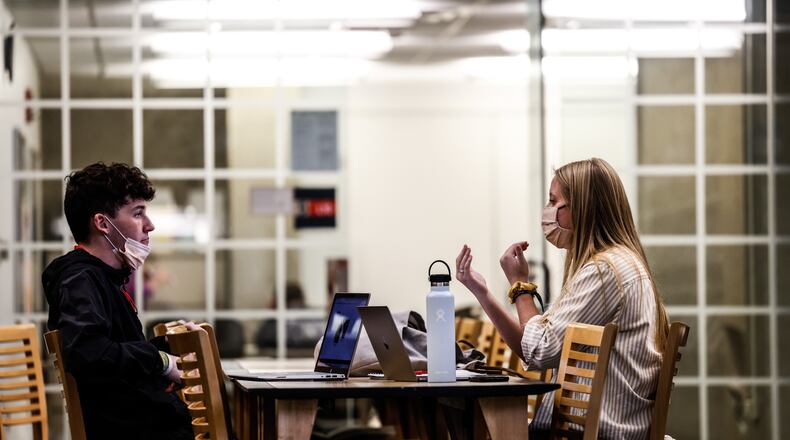Everyone should be concerned about enrollment at local colleges and universities because more and more jobs are requiring that people have a two-year or four-year degree, Cassie Barlow, president of the Southwestern Ohio Council on Higher Education, told the Journal-News.
“Our economy is much stronger, flexible and resilient with a workforce that has obtained post-secondary credentials,” Barlow said.
Final enrollment numbers have not been released, but the slight uptick in enrollments at some schools could be an early indication students are returning to campuses following hiatus due to the COVID-19 pandemic.
Last year, many students put off college due to the pandemic. According to the National Student Clearinghouse, the percentage of 2020 high school graduates enrolling immediately in college declined nationally by 6.8 percent last school year.
Here’s what local colleges and universities saw in their initial enrollment counts:
- Miami University reports 23,045 students are enrolled for fall semester, up about half a percent from last fall semester.
- University of Dayton says it predicts a record-high enrollment of about 12,000 students, up about 3% from last fall.
- At Wright State, preliminary enrollment count fell by about 6% compared to 2020 preliminary numbers, with 11,469 students currently enrolled in the fall 2021 semester. However, the university says about 400 more students enrolled this fall than was expected. Wright State has seen enrollment fall for the last several years.
- Sinclair Community College reports their initial enrollment is down slightly, to 15,714 students compared to 16,304 in fall 2020. However, Sinclair says they expect to continue to enroll students and expect to have about 18,000 students enroll in fall 2021.
College enrollment is critical to the state’s ability to predict how many qualified workers will be able to fill in-demand jobs in the future, according to Jeff Robinson, a spokesman for the Ohio Department of Higher Education.
“Students bring a wealth of talent and diversity to Ohio, whether they have graduated from high school here or are coming to college in Ohio from out of state,” Robinson said. “Of course, we hope their college experience in Ohio results in them staying here to join our workforce, which provides long-term benefits to the economy.”
UD cited a growth in online classes and online degrees as part of the reason enrollment did not fall, as well as transparent pricing and expanding support for transfer students, veterans and military families.
“We also experienced significant growth in enrollment of international students and our online graduate programs continue to experience strong enrollment, as well,” said Jason Reinoehl, vice president for strategic enrollment management at UD.
Barlow said while higher education has changed in the last year, it’s not clear how lasting those changes will be.
“We are going through a rough time in our nation right now as we work through the challenges of a global pandemic and it is hard to recognize a trend at this point or to make any forecasts based upon the trend,” Barlow said. “I think we will need a few more years in order to fully analyze the impact of the pandemic to Higher Education.”
About the Author

